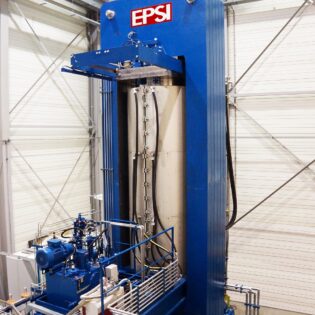Le contr?le non destructif du carbure cémenté est le nom général de tous les moyens techniques pour utiliser les caractéristiques du son, de la lumière, du magnétisme et de l'électricité pour détecter s'il y a des défauts ou des inhomogénéités dans l'objet inspecté, et pour donner des informations telles que la taille, l'emplacement , la nature et la quantité des défauts, afin de déterminer l'état technique de l'objet inspecté (tel que qualifié ou non, durée de vie restante, etc.). Ce type de technologie est souvent utilisé dans le contr?le qualité des produits en carbure cémenté.
In this blog, we will focus on four nondestructive testing methods of cemented carbide products commonly used in meetyou carbide Company: ultrasonic testing (UT), magnetic particle testing (MT), liquid penetrant testing (PT) and X-ray testing (RT).
Ultrasonic nondestructive testing of cemented carbide
Ultrasonic Testing is one of the common nondestructive testing methods for cemented carbide in industry. When an ultrasonic wave enters an object and encounters a defect, part of the sound waves will be reflected. The transmitter and receiver can analyze the reflected waves, so that the defect can be detected abnormally accurately, and the position and size of the internal defect can be displayed, and the thickness of the material can be measured.
Advantages of ultrasonic nondestructive testing of cemented carbide:
1, the penetration ability is large, for example, the effective detection depth in steel can reach more than 1m;
2. For plane defects such as cracks and interlayers, the nondestructive testing sensitivity of cemented carbide is high, and the depth and relative size of defects can be measured;
3. The equipment is light, the operation is safe, and it is easy to realize automatic inspection.
Désavantages:
It is not easy to inspect alloy workpieces with complicated shapes, so the surface to be inspected must have a certain smoothness, and a coupling agent should be used to fill the gap between the probe and the surface to ensure sufficient acoustic coupling.
magnetic powder nondestructive testing of cemented carbide

Let’s first understand the principle of nondestructive testing of magnetic powder. After magnetization of the material and workpiece, due to the discontinuity, the magnetic lines of force on the surface and near the surface of the workpiece are locally distorted, resulting in leakage magnetic field, which absorbs the magnetic powder applied to the surface of the workpiece, forming visible magnetic marks under appropriate illumination, thus showing the position, shape and size of the discontinuity.
The applicability and limitations of nondestructive testing of magnetic powder are as follows:
1. Non-destructive testing of magnetic powder alloy is suitable for testing the discontinuity of ferromagnetic materials with small size and narrow gap on the surface and near the surface.
2. Non-destructive testing of magnetic powder can be used to test parts under various conditions, as well as various types of parts.
3. Defects such as cracks, inclusions, hairlines, white spots, folds, cold insulation and looseness can be found.
4. Non-magnetic materials cannot be detected by nondestructive testing of magnetic powder cemented carbide. It is difficult to find the delamination and folding of the surface with shallow scratches, deep buried holes and angles less than 20 with the workpiece surface.
Non-destructive testing of liquid penetrating
The basic principle of nondestructive testing of liquid penetrant cemented carbide is that after the surface of parts is coated with fluorescent dyes or colored dyes, the penetrant can penetrate into the surface opening defects under the capillary action for a period of time; After removing the excess penetrant from the surface of the part, apply the developer on the surface of the part.
Similarly, under the action of capillary channel, the developer will attract the penetrant left in the defect, and the penetrant will seep back into the developer. Under a certain light source (ultraviolet light or white light), the trace of penetrant at the defect will be displayed (yellow-green fluorescence or bright red), so as to detect the appearance and distribution of the defect.
The advantages of penetrant cemented carbide nondestructive testing are:
1, can detect various materials;
2. It has high sensitivity;
3. Intuitive display, convenient operation and low detection cost.
However, the disadvantages of nondestructive testing of infiltrated cemented carbide are as follows:
1. It is not suitable for checking workpieces made of porous loose materials and workpieces with rough surfaces;
2. Non-destructive testing of infiltrated cemented carbide can only detect the surface distribution of defects, but it is difficult to determine the actual depth of defects, so it is difficult to make quantitative evaluation of defects. The detection result is also greatly influenced by the operator.
X-ray nondestructive testing of cemented carbide

Finally, X-ray detection is because there will be loss after X-rays pass through the irradiated object, and different substances with different thicknesses have different absorptivity to them. However, when the negative film is placed on the other side of the irradiated object, corresponding figures will be generated due to different ray intensities, so film reviewers can judge whether there are defects in the object and the nature of the defects according to the images.
Applicability and limitations of radiographic testing:
1. It is sensitive to detecting volume defects, and it is easy to characterize the defects.
2. X-ray negatives are easy to keep and traceable.
3. Visually display the shape and type of defects.
4. Disadvantages: The buried depth of defects cannot be located, and the detection thickness is limited. The negative film needs to be specially sent and washed, which is harmful to human body and has high cost.
In a word, ultrasonic and X-ray nondestructive testing of alloy is suitable for detecting internal defects. Among them, ultrasonic wave is suitable for parts with more than 5mm and regular shape, and X-ray can’t locate the buried depth of defects, so there is radiation. Magnetic particle and penetrant flaw detection are suitable for detecting surface defects of components; Magnetic particle inspection is limited to magnetic materials, and penetrant inspection is limited to surface









